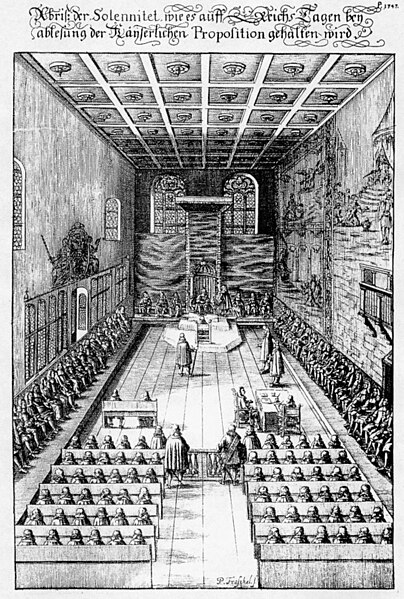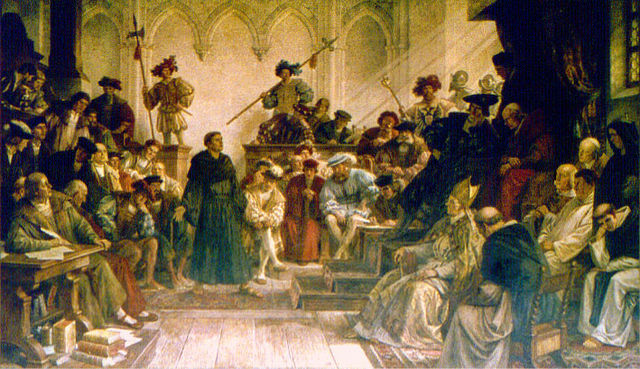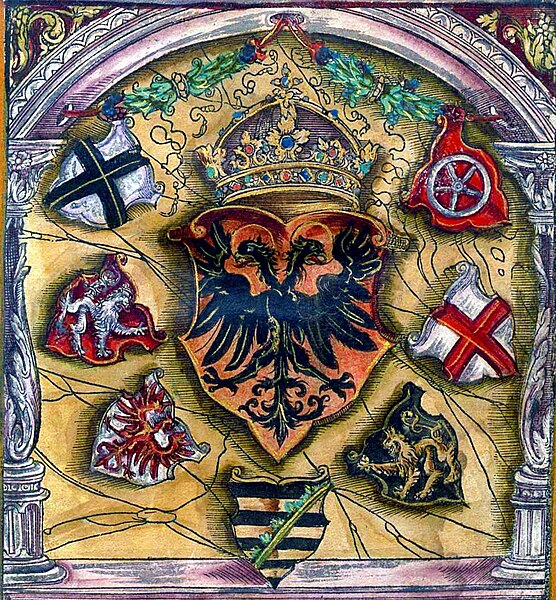The diets of Augsburg were the meetings of the Imperial Diet of the Holy Roman Empire held in the German city of Augsburg. Both an Imperial City and the residence of the Augsburg prince-bishops, the town had hosted the Estates in many such sessions since the 10th century. In 1282, the diet of Augsburg assigned the control of Austria to the House of Habsburg. In the 16th century, twelve of thirty-five imperial diets were held in Augsburg, a result of the close financial relationship between the Augsburg-based banking families such as the Fugger and the reigning Habsburg emperors, particularly Maximilian I and his grandson Charles V. Nevertheless, the meetings of 1518, 1530, 1547/48 and 1555, during the Reformation and the ensuing religious war between the Catholic emperor and the Protestant Schmalkaldic League, are especially noteworthy. With the Peace of Augsburg, the cuius regio, eius religio principle let each prince decide the religion of his subjects and inhabitants who chose not to conform could leave.

Saxon chancellor Christian Beyer proclaiming the Augsburg Confession in the presence of Emperor Charles V, 1530
Confutatio Augustana and Confessio Augustana being presented; this picture is somewhat ahistorical because a written copy of the Confutatio was never provided by the Catholics; rather they had to go off of stenographers they had brought with them just in case the Catholics wouldn't give them a copy.
Imperial Diet (Holy Roman Empire)
The Imperial Diet was the deliberative body of the Holy Roman Empire. It was not a legislative body in the contemporary sense; its members envisioned it more like a central forum where it was more important to negotiate than to decide.
Seating plan for an inauguration of the Imperial Diet in the Regensburg Town Hall from a 1675 engraving: Emperor and prince-electors at the head, secular princes to the left, ecclesiastical to the right, deputies of imperial cities in the foreground.
The summons for Luther to appear at the Diet of Worms, signed by Charles V. The text on the left was on the reverse side.
"Here I stand": Martin Luther at the Diet of Worms, 1521 19th-century painting by Hermann Wislicenus
The coats of arms of prince electors surround the Holy Roman Emperor's, from flags book of Jacob Köbel (1545).






